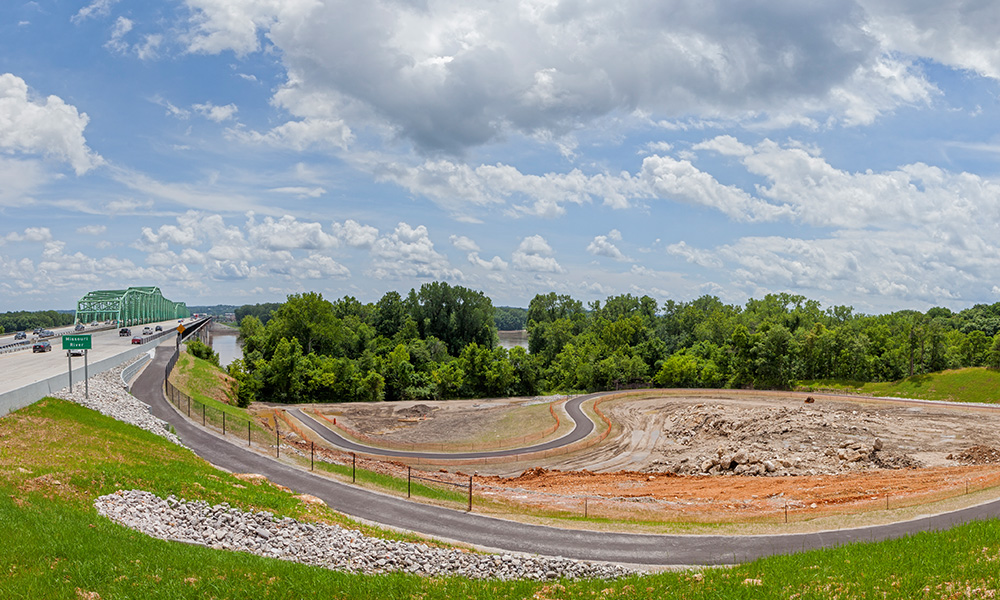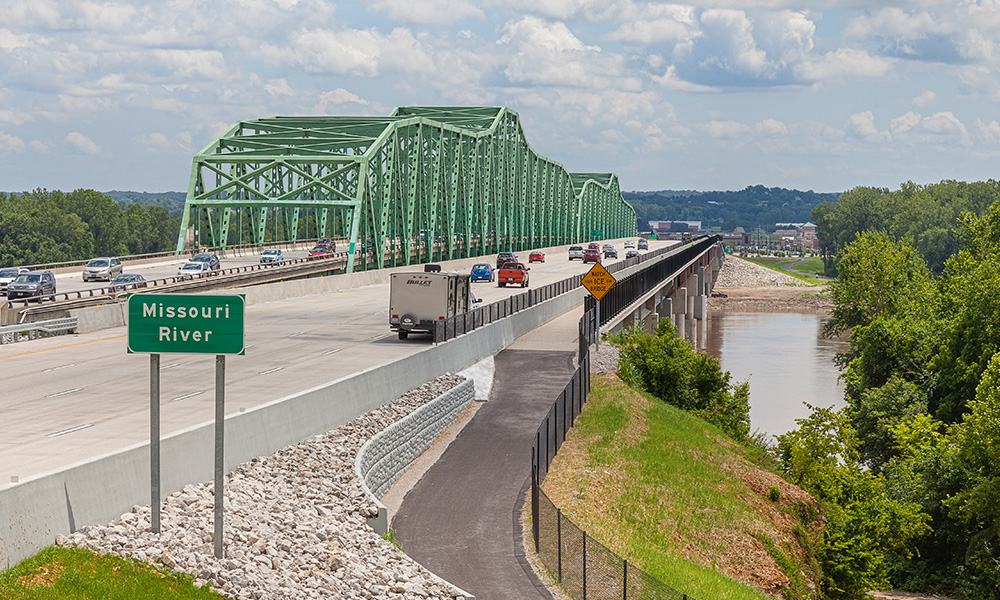Solution
Hoping to speed construction and maximize the value of its investment, the agency chose a design-build approach this time around, encouraging bidders to suggest ways to enhance the project while working within the budget.
With experience in designing more Missouri River bridges than any other consultant, Burns & McDonnell had some ideas. After teaming with a joint venture led by Walsh/Alberici, we put our engineering experience to work on a winning design-build proposal that offered to do more in less time than MoDOT anticipated.
The design called for a half-mile-long bridge with a navigation span of 510 feet, making it the longest parallel flange, steel-plate girder span to be built on the Missouri River. With drilled shafts up to 11 feet in diameter and socketed into limestone, the deepwater foundations for the new bridge were designed to resist seismic and barge impact loads, even in the event of major flooding or sediment shifts.
In addition to the four 12-footwide traffic lanes, the bridge also includes a separate 10-foot-wide shared-use path designed to protect cyclists and hikers from vehicular traffic. That path, which connects to the popular Katy Trail in St. Charles County and Monarch Levee Trail in St. Louis County, shares space with pedestrian overlooks, providing users with a scenic view of the river below.
In accordance with the plan, the traffic lanes on the new Daniel Boone Bridge are designated for eastbound traffic, while the existing 1980s bridge carries vehicles heading west. The team added value to its proposal with the addition of a fourth westbound lane that runs a total of 1.5 miles. Factored into the original cost estimate, the lane was designed to alleviate congestion for those approaching and leaving the bridge.
The winning design also included plans to raise an existing overpass at Spirit of St. Louis Boulevard to correct a long-standing vertical clearance problem. By raising the bridge’s height 24 inches, the boulevard achieved the standard vertical clearance that is important for traffic safety.


